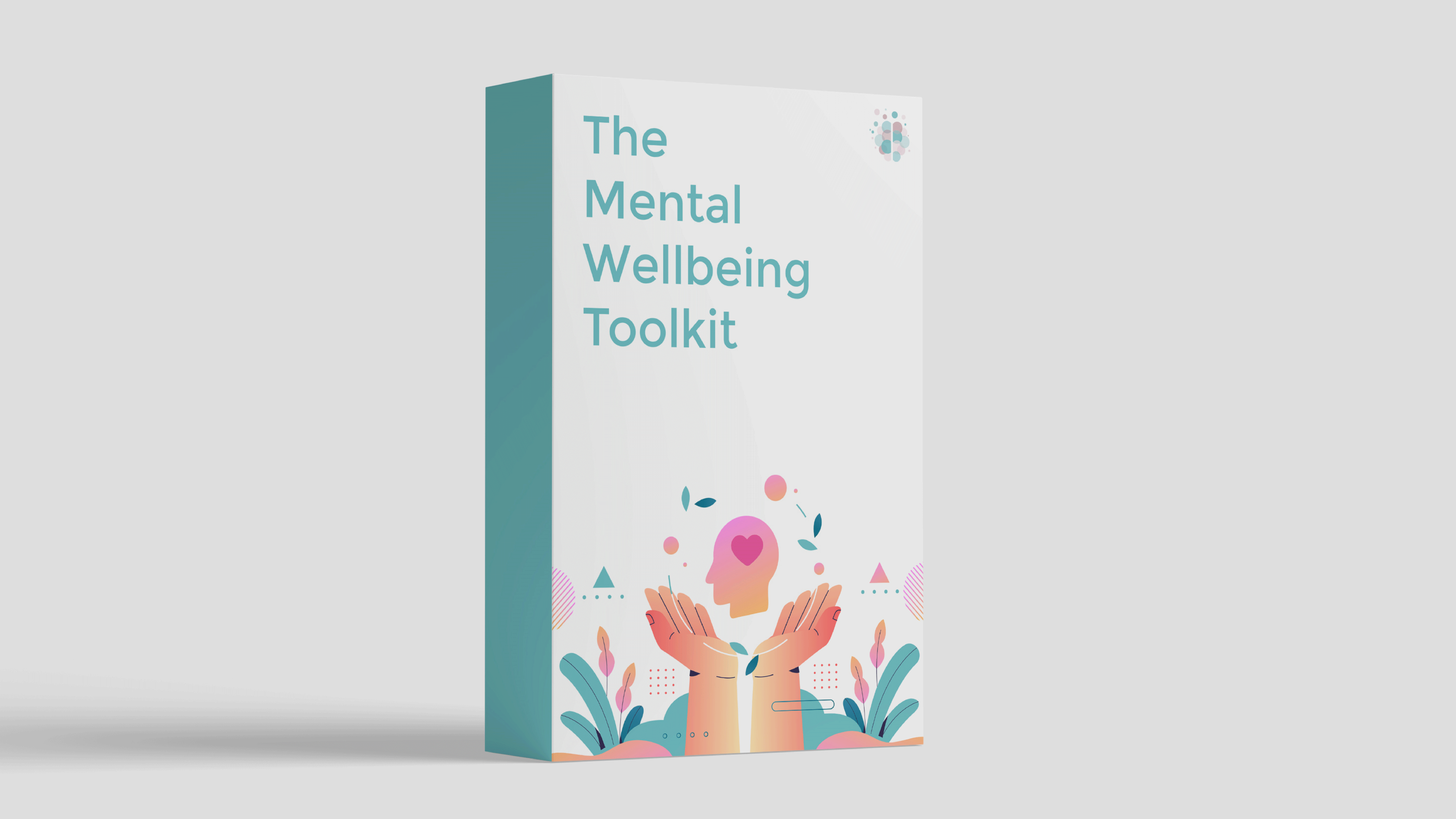Are my emotions justified or am I overreacting?
Sound familiar?
If you experience mental health issues such as C-PTSD, increased stress sensitivity can make it challenging to discern whether or not your feelings are proportionate to the situation. Keep reading to discover five strategies to help you effectively assess your emotions.
1. First, Focus on Calming Your Amygdala
If you have high stress sensitivity, your body's physical response to stress is stronger than average. This heightened reactivity can lead to a cascade of mental and physical distress, creating a vicious cycle of escalating suffering.
To break this cycle, first prioritise calming down your amygdala – your brain's emotional centre responsible for regulating your stress response. It's important to do this before delving into deeper assessment of the situation, because determining if you're overreacting to something requires a balance between emotions and rationality.
By soothing your amygdala, you create a more conducive environment for rational assessment of the situation.
Strategies for this include:
- Creating a cognitive distraction plan for times of distress (as outlined in The Thinking Slow Method)
- Practicing grounding techniques
- Using the TIPP DBT skill
- Doing breathing exercises
2. Journal and Notice Your Cognitive Distortions
When your amygdala is in control, it often leads to unhelpful thinking patterns that perpetuate the vicious cycle of emotional overreactions.
Your mind might engage in cognitive distortions such as catastrophising (assuming the worst possible outcome), black-and-white thinking (seeing situations or people as all good or all bad), or personalisation (taking things too personally).
Journaling gives you the opportunity to become more aware of these types of thoughts.
As you write, try to notice any cognitive distortions. This awareness is the first step toward challenging and reframing your distorted thoughts, leading to a more balanced emotional response.
Consider how exactly your thoughts influence your emotional response. Do they intensify your feelings of sadness, anxiety, or anger? Recognising the impact of your thoughts can motivate you to challenge them. And labelling your emotions is an important step to defusing them.
Tip: There are many different types of cognitive distortions. Use our handy phone reminders in The Mental Wellbeing Toolkit to quickly identify them on the go.
3. Consider an Outsider Perspective
Think about how you’d perceive the situation if it happened to someone else.
For example, imagine a friend telling you the story as if they’d experienced it.
What are your initial thoughts? What would you tell them? It’s often surprising how much a third-party perspective can generate new insights.
It helps you make decisions based on logic as well as emotion. In the DBT framework, this is referred to as shifting into wise mind from emotion mind.
Other ways to gain an outsider perspective include:
- Seeking input from trusted people, whether friends, family, or a therapist
- Searching in online forums for discussions involving people with similar experiences
4. Reflect on Past Experiences
Reflect on similar situations you've experienced before.
- What happened?
- How did you think and feel about it later?
- Did you realise that your initial emotional response may have been exaggerated?
- How might this relate to what you’re currently experiencing?
Look for common patterns across your past experiences.
Are there certain triggers that consistently lead to emotional overreactions? Do you tend to interpret events in a particular way that exacerbates your emotions?
Fears and Trauma
By exploring these questions, you might identify common triggers that consistently lead to emotional overreactions. For example, experiencing relational trauma might have left deep emotional scars that resurface in current situations.
These are sometimes referred to as "emotional flashbacks". If a current situation reminds you of a past traumatic experience, it can cause you to re-experience the emotions associated with the trauma, leading to an intense emotional reaction that's disproportionate to the current situation.
Fears can also lead to overreactions. For example, fear of rejection, abandonment, or loss can cause us to react disproportionately to situations that threaten these fears.
- If you fear rejection, you might overreact to a friend's cancellation of plans because it reinforces your fear of not being accepted.
- If you fear abandonment, you might overreact to a partner's request for alone time because it activates your fear of being alone or unloved.
- If you fear loss, you might overreact to a decrease in the value of your investments because it triggers concerns about financial security.
By recognising your patterns and triggers, you can increase your self-awareness and work on developing healthy coping strategies.
5. Connecting Feelings to Needs
While thoughts are important, overfocusing on them can sometimes lead to neglecting the underlying emotions and needs driving those thoughts.
Understanding Feelings vs Needs
- Feelings. Feelings are signals from your body that convey information about your internal state and your environment. They can range from contentment and excitement to sadness and anger.
- Needs. Needs are the underlying desires or requirements that motivate your feelings and behaviours. These needs can be physical, emotional, or psychological.
Your feelings are closely connected to your needs.
When you experience certain emotions, it's often because those emotions are signalling unmet needs.
For example, feeling anxious might indicate a need for safety, while feeling lonely might indicate a need for connection.
Once you've identified the needs underlying your emotions, you can take proactive steps to address them. And instead of reacting impulsively based on intense emotions, you can focus on finding constructive ways to meet your needs.
Here’s a case study example.
Connecting Feelings to Needs Case Study
Laura is in a long-term committed relationship, but she often feels upset when her partner prioritises work over spending time together. She realises that her feelings of frustration stem from her need for quality time and emotional connection with her partner.
Instead of reacting impulsively with anger or withdrawal, Laura decides to take proactive steps to address her underlying needs.
- Identifying the need. Laura acknowledges that her feelings are connected to her need for quality time with her partner. She values feeling loved, supported, and emotionally connected in her relationship.
- Effective communication. Laura chooses to communicate openly and assertively with her partner about her feelings and needs. She expresses that while she understands the demands of work, she also feels a strong need for their relationship to be a priority.
- Finding compromise. Together, Laura and her partner discuss ways to balance work commitments with quality time together.
- Self-nurturing. Laura prioritises activities that help her feel her best self, such as spending time with friends, pursuing her hobbies, and exercising.
- Building trust. Laura reflects on her feelings of frustration and works on building trust in her relationship. She reminds herself that her partner's commitment to their relationship is evident in their efforts to find a compromise and prioritise their time together.
Connecting her feelings to her needs helped reduce the intensity of her emotional reactions.
When she recognised that her emotions were signals indicating unmet needs, she responded to them with compassion instead of allowing them to escalate into overreactions.
By taking these proactive steps, Laura addressed her need for more quality time in a constructive and healthy way. Instead of reacting impulsively to her emotions, she focused on finding solutions that honoured both her needs and those of her partner.
Be Kind to Yourself
It's important to remember that experiencing emotional overreactions is not your fault.
But just as someone with a physical health condition needs to manage it, managing emotional health issues is your responsibility. Being kind to yourself and acknowledging your efforts in managing your emotions is key for healthy relationships and overall mental wellbeing.
Summary
It’s common for sensitive people to struggle with questioning the validity of their emotional responses. Strategies that can help with this include:
- Focusing on calming the amygdala
- Journaling and identifying cognitive distortions that fuel intense emotions
- Considering an outsider perspective
- Reflecting on past experiences
- Connecting feelings to needs
Instead of viewing emotions in black-and-white terms (i.e., justified or unjustified), consider them on a continuum. Emotions are complex and multifaceted experiences that are rarely straightforward or binary. Ask yourself questions like, "What factors are contributing to my emotional response?" or "How might others perceive this situation differently?"
We hope you find this article helpful.
Want practical tools to help you cope with emotional sensitivity? Be sure to check out The Mental Wellbeing Toolkit. It's "like 10 therapy sessions in one."




